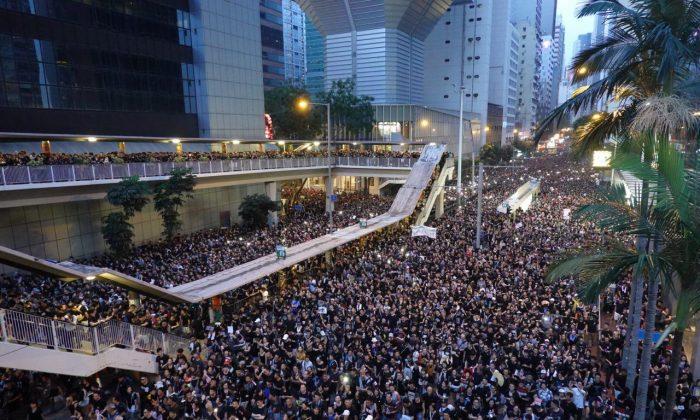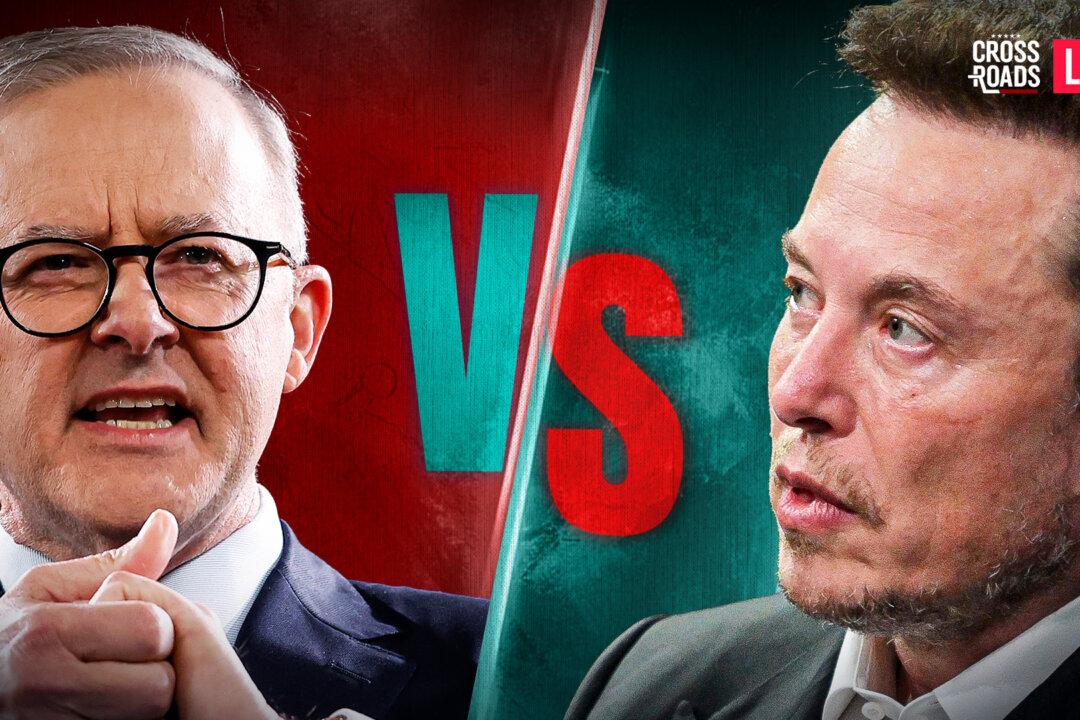Close to 2 million people, out of Hong Kong’s population of just over 7 million, were out on the streets on June 16 to protest a law that would allow the Chinese Communist Party (CCP) in the mainland to extradite people from the city, which is supposed to have autonomy.
The protests are growing, they’re drawing people both young and old, and it doesn’t appear they'll stop anytime soon.
The sheer volume of protesters, along with the fact that they’re still protesting, even after achieving the original goal of blocking the proposed law, shows something important: The Chinese people no longer support the CCP, and, even more so, they no longer fear it.
Photographs show some of the different arm patches being worn by protesters. Among these is one that says “Hostile Forces.” This is a play on one of the CCP’s favorite labels in its propaganda, that “hostile foreign forces” are to blame for major events that make the CCP look bad.
The fact that some protesters are wearing patches claiming they’re part of this maligned label with tongue-in-cheek, shows an open willingness to defy the CCP, shows that they regard the CCP’s label as a joke, and reveals that they fear the CCP so little that they’re willing to publicly wear the propaganda name of its unseen scapegoat enemy.
For the CCP, the “hostile foreign forces” slogan is meant to signify a dangerous foreign force for communists to unite against, yet it has instead become a symbol of defiance against the CCP.
Of course, this isn’t the first time the people of Hong Kong have united to protest against the CCP. In 2014, from September to December, more than 100,000 people took to the streets to protest a CCP decision to regulate Hong Kong’s electoral system—which the Party saw as a way to control candidates in the city.
The CCP and the Hong Kong government declared the 2014 protests were illegal; they ended without the protesters getting much in return. The Hong Kong government only promised to submit a “New Occupy report” to the CCP, which was itself a focus of criticism in the end.
The current protests are almost incomparably different, however. This is no longer just a student protest, like in 2014; the current protests are already around 20 times larger than in 2014, and the Hong Kong government is already caving to their demands.
In Hong Kong, the current protests could remake the political landscape. At the very least, it likely means the end of Lam’s term, and it will likely also affect future elections, in terms of how close candidates will dare to align themselves with Beijing.
But on a deeper level, the impact is even greater. The protests are sending a message to people in mainland China, and that is the CCP is no longer something to be feared. The open defiance has impact enough, but the fact that protesters’ initial demands were already met shows even further that the grasp of the CCP is failing.
Facing this issue, the CCP has two options: either allow the protests to carry on and likely succeed, or crush the protesters, as they did in the Tiananmen Square massacre of 1989. Yet, in this age of social media, when every person has a smartphone with a video camera, and when a Trump presidency has shown a willingness to stand up to the CCP, the violent option is no longer viable.
The protests show that the Chinese people no longer fear the CCP and that the Party has lost its mechanism of fear that was once its key hold on power.


![[LIVE at 10:30AM ET] Major Global Change to the Banking System Will End Financial Privacy](/_next/image?url=https%3A%2F%2Fimg.theepochtimes.com%2Fassets%2Fuploads%2F2024%2F04%2F19%2Fid5633115-0426-1080x720.jpg&w=1200&q=75)


